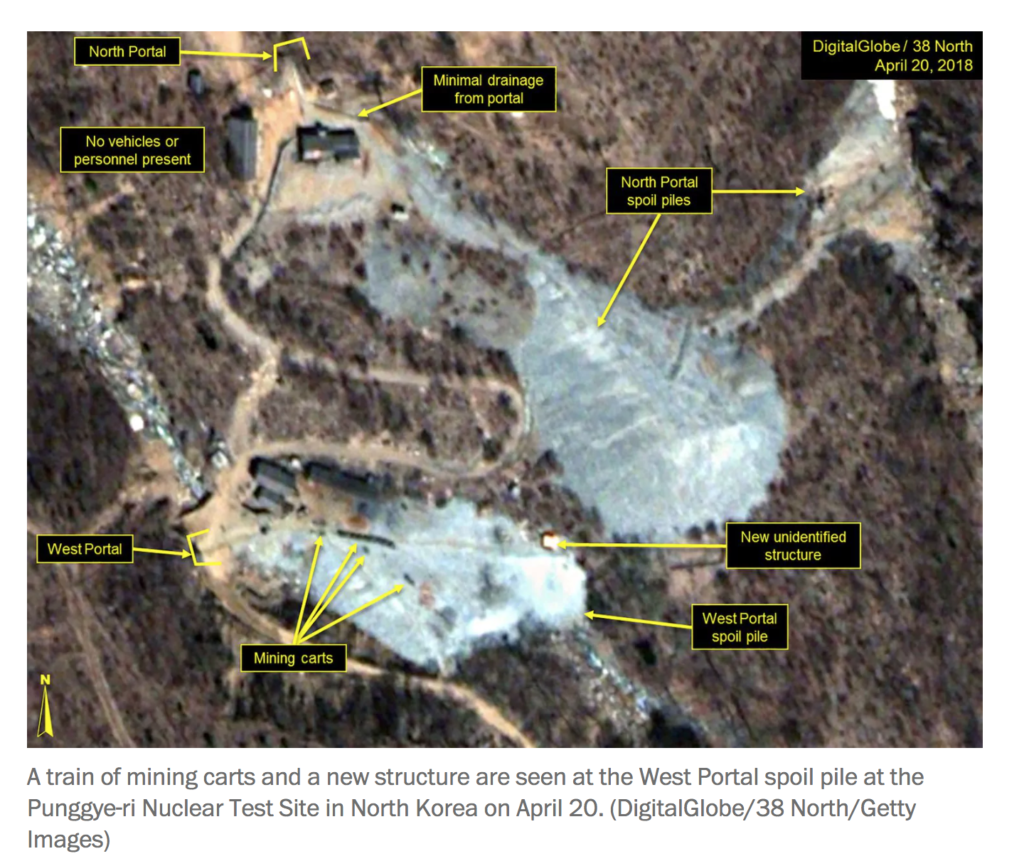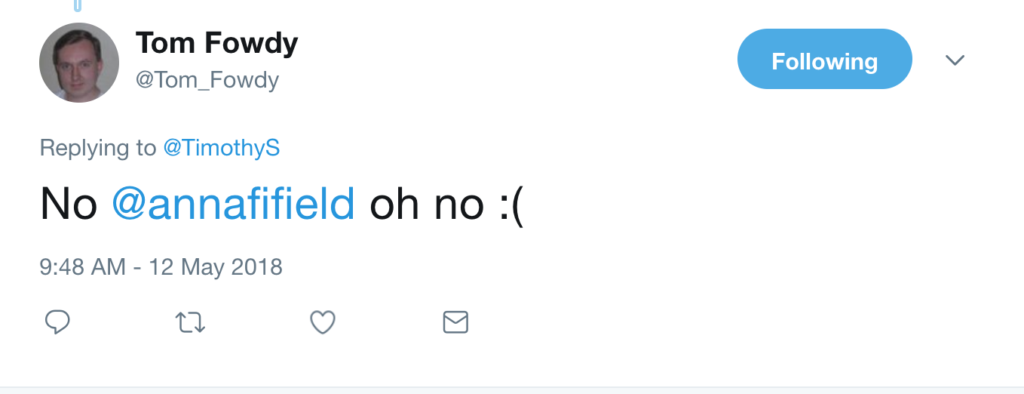North Korean state media today announced that it will invite foreign reporters to observe the dismantling of its “northern nuclear test ground” under the mountain called Punggye-ri between May 23 and May 25, depending on the weather.

Screenshot of the DPRK nuclear test site from the Washington Post
Here’s the word from KCNA:
Dismantlement of the nuclear test ground will be done in the following sequence-making all tunnels of the test ground collapse by explosion; completely blocking entries; removing all observation facilities, research institutes and structures of guard units on the ground. In parallel with dismantlement of the nuclear test ground, guards and researchers will be withdrawn and the surrounding area of the test ground be completely closed.
And the press is invited. The DPRK will “allow not only the local press but also journalists of other countries to conduct on-the-spot coverage in order to show in a transparent manner the dismantlement of the northern nuclear test ground.”
In due consideration of small space of the test ground, journalists from other countries will be confined to those from China, Russia, United States, United Kingdom and south Korea. Second, the following steps will be taken for providing convenience of visit and coverage to international journalists.
Jean Lee, the former AP bureau chief in Pyongyang who is now a fellow at the US government-funded Wilson Center in Washington, called the press release “extraordinary.” In a series of tweets, she also raised some questions about the junket, based on her previous experience.
Allowing foreign
#media into#NorthKorea is always welcome. This is a country that sits at the bottom of global rankings for#press freedom. The more we get to see of#NorthKorea, the better our understanding. However…Media trips organized by#NorthKorea’s govt are designed & orchestrated to disseminate its#propaganda. In this case, the new airport in#Wonsan & the 5-star hotel reserved for VIPs, both seen as opportunities for tourism — in addition show of commitment to#denuclearization
Well, yes, but that’s very far from the “closed society” word we constantly hear about the DPRK from US media.
North Korea made one thing clear, however: Japanese media will not be allowed to observe the happenings in the mountains. This is probably because North Korea has greatly resented Prime Minister Shinzo Abe’s heated rhetoric last year, when he increased tensions by counseling the Trump administration to step up the maximum pressure campaign to stop Kim Jong Un’s nuclear and missile program.
And here’s the deal for the reporters who manage to get there (US media will have to get a State Department waiver on visiting the North, due to the foolish move by Congress to shut down US travel and engagement last summer). KCNA again:
1) All international journalists will be provided with charter flight from Beijing to Wonsan, and other related steps such as opening territorial air space will be taken.
2) Special accommodation will be arranged in Wonsan for stay of the international journalists, and press center be set up for their use.
3) Special charter train will be arranged from Wonsan to the northern nuclear test ground for the international journalists.
4) In consideration of the fact that the test ground is located in the uninhabited deep mountain area, the international journalists will be accommodated in the special charter train and be provided with appropriate conveniences.
5) Necessary conditions and cooperation will be provided to the international journalists so that they can transmit at the press center about dismantlement of the test ground which they have covered on the spot.
According to Yonhap,
North Korea has conducted all six of its nuclear tests in Punggye-ri in the northeast since 2006. The sixth and most recent one was carried out on Sept. 3, 2017. On April 21, 2018, Pyongyang announced after a key ruling party meeting that it would dismantle the site because it has already completed its nuclear development.
Initially – in keeping with the Washington Consensus that everything North Korea says is suspect – Kim’s decision to dismantle his nuclear testing site was greeted with skepticism. As the Washington Post reported on April 25,
The move was greeted warmly by President Trump, who called it “big progress!” But observers suspect that Kim’s announcement wasn’t as generous as it seemed. After so many damaging tests, some noted, Mount Mantap had probably exhausted its use anyway.
That, however, turned out not to be true. As the 38North website (produced by the US-Korea Institute at Johns Hopkins School for Advanced International Studies) has pointed out based on its exhaustive analysis of satellite imagery, “claims that the entire site ‘is wrecked beyond repair’ are wrong.”
And now the media can see for themselves. Unless they’re from Japan, of course. And it remains to be seen whether the DPRK’s restriction of credentials to reporters from the US, the UK, China, Russia and “south Korea” (note that small “s” denoting Korean unhappiness with division) would exclude Anna Fifield, the Washington Post’s intrepid bureau chief in Tokyo. She’s been covering North Korea like a blanket and at times boistrously critical of North Korea. She also hails from New Zealand, as I was reminded this morning by someone on Twitter:

But I bet they’ll let her in, if she chooses to go. I’d go if I could.
